Architecture
A SPACE FOR ART
 The Kochi Muziris Biennale means that all the talk is about art. We want to look at the spaces that showcase these
The Kochi Muziris Biennale means that all the talk is about art. We want to look at the spaces that showcase these
creatures of the artist’s imagination. Biennale Joint Secretary Bonny Thomas talks to us about the venues.
At the moment Kochi is bursting with the anticipation of the Biennale. Artists have taken residence at the varied venues and there are pots of paint, paper, clay, laterite and such bringing to life color, form and feeling. The venues are as important as the artwork, given birth by the colorful history of the region. Nature and time has carved Fort Kochi into the tourist hub that it is today.
It was in the year 1314 that the great flood swept the port of M uziris away into history. The floods shifted the natural harbor from Muziri to ochi. “The birth of a child and death of the mother” says Bonny Thomas. There were no road systems in the region and hence water was the main mode of transport. Spices from the Western Ghats were taken in boats down the Periyar River and eventually to the Vembanad Lake. Being well connected through a network of waterways that we still see today, Kochi flourished. Its popularity resulted in a fight to own the land by the ortuguese, Dutch and the British. Stories of explorers, businessmen, soldiers, slaves, poets, lovers etc are hidden in the walls of Fort Kochi.
The spirit of colonial architecture is captured in the sweeping colonnades, wide verandahs and vast halls. While the regional flavors are bundant in the laterite walls, wooden windows and intricate detailing. Worldwide,the Biennale strives to preserve the cultural heritage of the city it’s named for. The Kochi Muziris Biennale holds onto the past through its historically important venues that have stood the test of time.
ASPINWALL HOUSE
 This 19th century building was owned by Oughterson, Campbell and Company which dealt in ship building and timber trade. Built on the banks of the ‘kayal’, the building is one of the largest heritage properties here. In 1846, Aspinwall was bought by the Scott brothers who were joined by John H Aspinwall.
This 19th century building was owned by Oughterson, Campbell and Company which dealt in ship building and timber trade. Built on the banks of the ‘kayal’, the building is one of the largest heritage properties here. In 1846, Aspinwall was bought by the Scott brothers who were joined by John H Aspinwall.
The new addition to the company expanded the trade to include spices and other agro products. Aspinwall was a popular Municipal Chairman and brought a lot of change to the area. On his death, the company passed many hands to later end up in despair. It is amazing to know that one of the most important trade centers in the area is now the largest art center for the Biennale as sixty percent of the works are displayed here
Architecture
Creating a Cozy Living Room: Tips for Comfort and Style
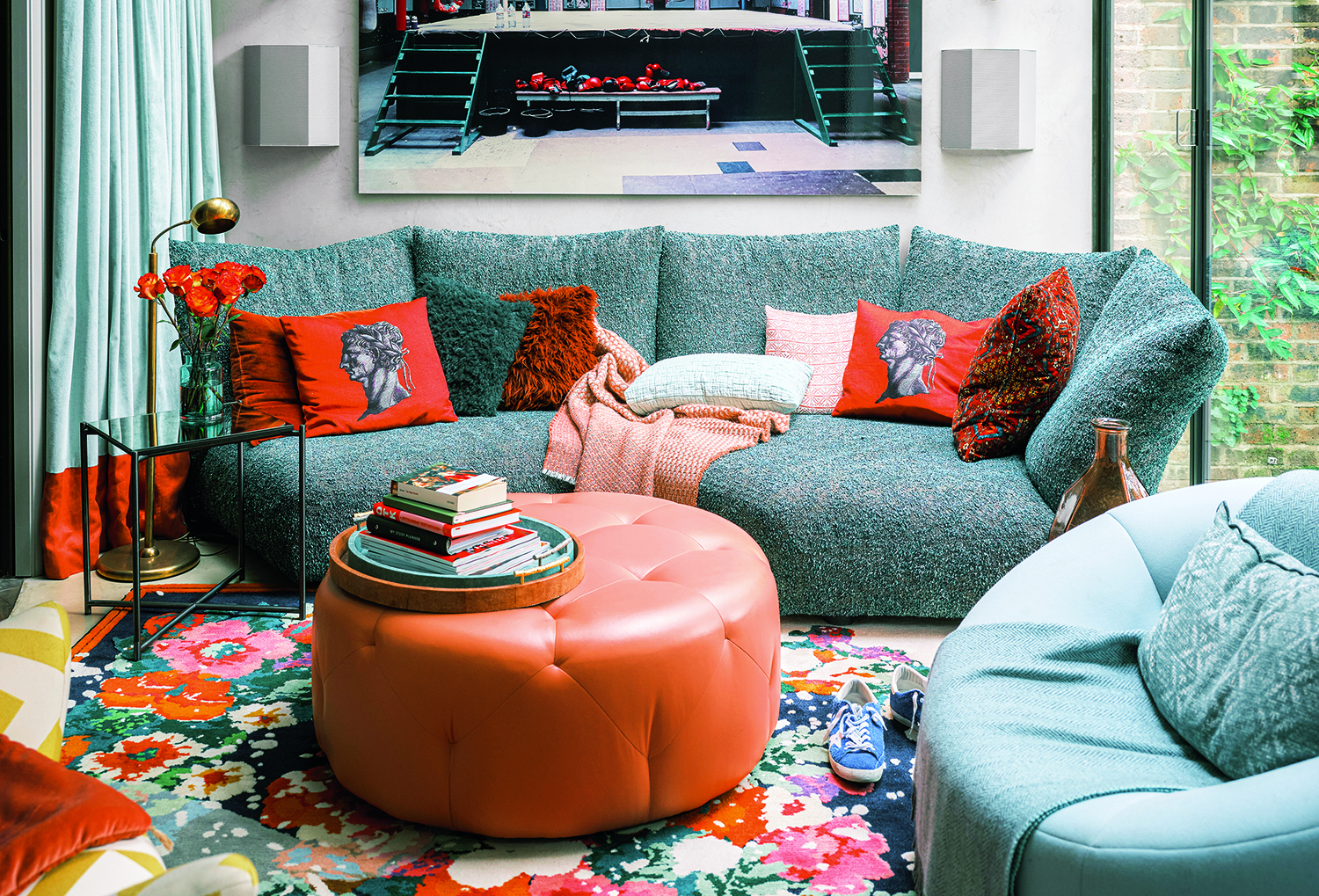
Your living room is more than just a space for entertaining; it’s a sanctuary where you unwind, relax, and spend quality time with loved ones. Creating a cozy living room involves a blend of comfort and style that makes the space inviting and functional. Here are some tips to help you achieve that perfect balance:
Choose the Right Furniture
Start with furniture that combines comfort and functionality. Opt for a plush sofa with deep cushions, perfect for lounging. Consider adding a cozy armchair or a recliner for additional seating. Make sure the furniture arrangement promotes conversation and allows for easy movement throughout the room.
Layer Your Lighting

Lighting plays a crucial role in setting the mood. Use a mix of lighting sources to create a warm ambiance. Combine overhead lights with floor lamps, table lamps, and wall sconces. For added coziness, incorporate dimmers or smart bulbs that let you adjust the brightness to suit different times of day and activities.
Add Textures with Throws and Pillows
Textures are key to a cozy living room. Layer different fabrics, such as soft throw blankets, plush pillows, and textured rugs. Choose fabrics like wool, velvet, and cotton that add warmth and comfort. Mix and match patterns and colors to create visual interest and a personalized touch.
Incorporate Warm Colors
Color influences the feel of a room. Opt for warm, neutral tones like beige, taupe, or soft gray for a calming effect. Accents in rich colors like deep blues, earthy greens, or warm terracotta can add depth and coziness. Use these colors in your furniture, accessories, and wall decor.
Use Rugs to Define Spaces
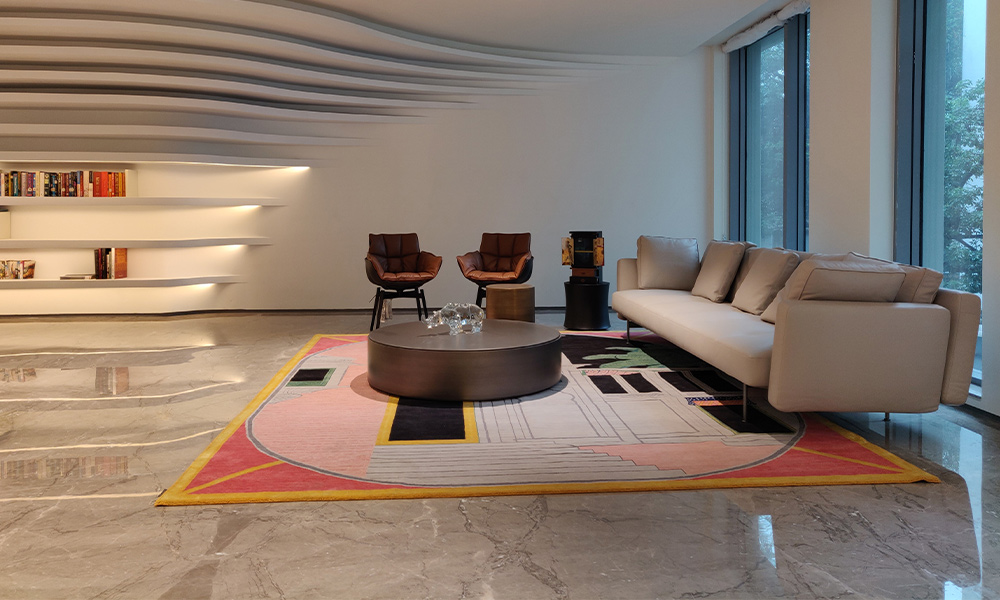
Rugs can help define different areas within a living room and add a layer of warmth underfoot. Choose a rug that complements your furniture and adds softness to the space. A large area rug can anchor the room, while smaller rugs can be used to highlight specific areas, like a reading nook or conversation zone.
Incorporate Natural Elements
Bring the outdoors in by incorporating natural elements. Plants not only add a touch of greenery but also improve air quality and create a calming atmosphere. Choose low-maintenance plants like succulents or snake plants if you’re not an avid gardener. Wooden furniture or decor pieces can also add a natural, grounded feel to the room.
Personalize with Artwork and Décor
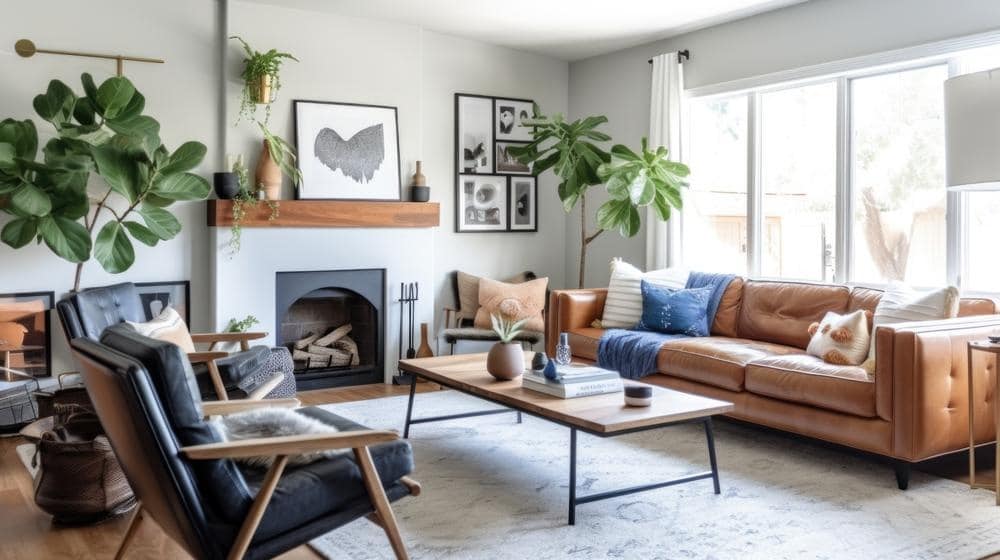
Add personality to your living room with artwork and decorative items that reflect your style. Choose pieces that resonate with you, whether it’s family photos, abstract art, or vintage finds. Arrange decor items in groups to create visual interest and avoid clutter.
Create a Focal Point
A focal point helps draw the eye and creates a sense of balance in the room. This could be a fireplace, a statement piece of art, or a stylish coffee table. Arrange your furniture and decor around this focal point to enhance the room’s overall cohesion and appeal.
Invest in Quality Window Treatments
Window treatments can impact both the look and feel of your living room. Opt for curtains or blinds that provide privacy while allowing natural light to filter through. Choose fabrics that complement your decor and add texture, such as linen or velvet.
Add Personal Touches
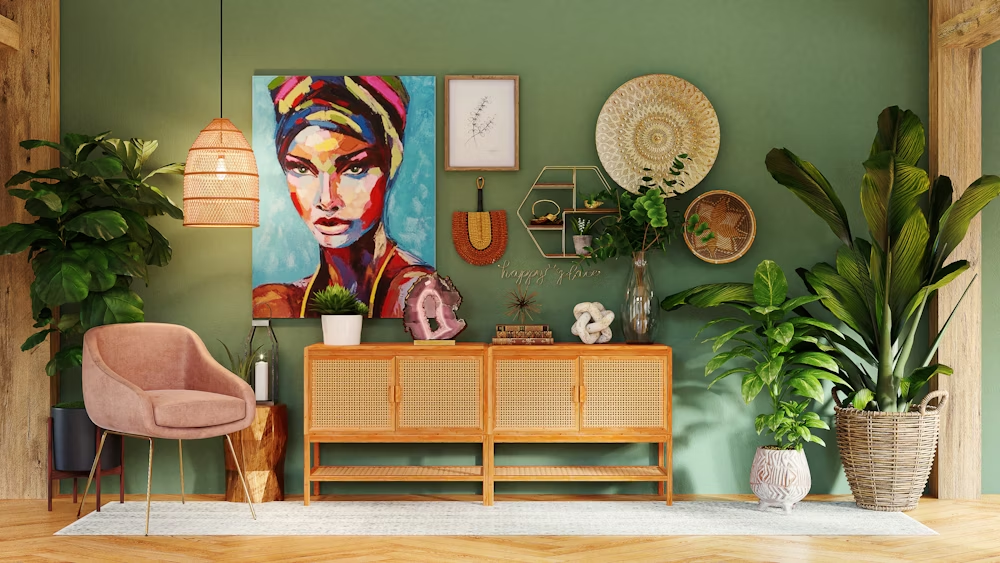
Finally, make the space truly yours by adding personal touches. Incorporate items that have sentimental value or reflect your interests and hobbies. Whether it’s a collection of travel souvenirs, a beloved quilt, or unique decorative objects, these elements will make your living room feel more inviting and personal.
By thoughtfully combining these elements, you can create a cozy living room that serves as a comfortable retreat and a stylish gathering place for friends and family. Enjoy the process of making your space uniquely yours and revel in the comfort and warmth it provides.
Architecture
The Art of Feng Shui: Creating Harmony in Your Home

Feng Shui, an ancient Chinese art and science, is all about creating harmony and balance in our living spaces. By arranging our homes in accordance with Feng Shui principles, we can invite positive energy, known as “chi,” into our lives and promote health, wealth, and happiness. In this blog post, we’ll explore the fundamentals of Feng Shui and share practical tips for applying its principles to create a harmonious and inviting home environment.
Understanding the Basics of Feng Shui:
Feng Shui is based on the concept of “chi,” or life force energy, which flows through our environments and influences our well-being. The goal of Feng Shui is to create a harmonious flow of chi by arranging our surroundings in a way that promotes balance and harmony. This includes paying attention to the layout, orientation, and organization of our homes to optimize the flow of energy.
The Five Elements of Feng Shui:
In Feng Shui, there are five elements—wood, fire, earth, metal, and water—that represent different qualities and energies. By incorporating these elements into our home decor, we can create a sense of balance and harmony. For example, wood represents growth and vitality, while water symbolizes flow and abundance. By incorporating a balance of these elements into our living spaces, we can enhance the flow of positive energy and create a sense of equilibrium.
Applying Feng Shui Principles to Your Home:
Clearing Clutter: Clutter can block the flow of chi and create stagnant energy in our homes. Start by decluttering your space and getting rid of items that no longer serve a purpose. This will create space for fresh energy to flow and rejuvenate your home.
Balancing Yin and Yang: In Feng Shui, yin and yang represent the balance of feminine and masculine energies. Create a harmonious balance of yin and yang in your home by incorporating soft, nurturing elements (yin) with strong, active elements (yang).
Enhancing the Flow of Chi: Pay attention to the layout and arrangement of furniture in your home to optimize the flow of chi. Avoid placing furniture in direct line with doorways or blocking pathways, as this can disrupt the flow of energy. Instead, create open and inviting spaces that allow chi to circulate freely.
Incorporating Nature: Bring the outdoors in by incorporating elements of nature into your home decor. Plants, natural materials, and natural light can enhance the flow of chi and create a sense of vitality and well-being in your living spaces.
Room-By-Room Feng Shui Tips:
Living Room: Arrange furniture in a circular or semi-circular layout to encourage conversation and social interaction. Use soft, natural fabrics and incorporate elements of wood and fire to create warmth and intimacy.
Bedroom: Position your bed diagonally across from the door to command a clear view of the room while you sleep. Keep the space under your bed clear and clutter-free to promote restful sleep and relaxation.
Kitchen: Keep your kitchen clean, organized, and clutter-free to promote health and abundance. Incorporate elements of fire and earth, such as candles and earthy tones, to create a warm and inviting atmosphere for cooking and dining.
By incorporating the principles of Feng Shui into your home decor, you can create a harmonious and balanced living environment that supports your health, happiness, and overall well-being. Whether you’re decluttering your space, balancing yin and yang energies, or enhancing the flow of chi, the art of Feng Shui offers timeless wisdom and practical guidance for creating a sanctuary of peace and tranquility in your home.
Architecture
5 Sustainable Interior Design Trends to Embrace in 2024
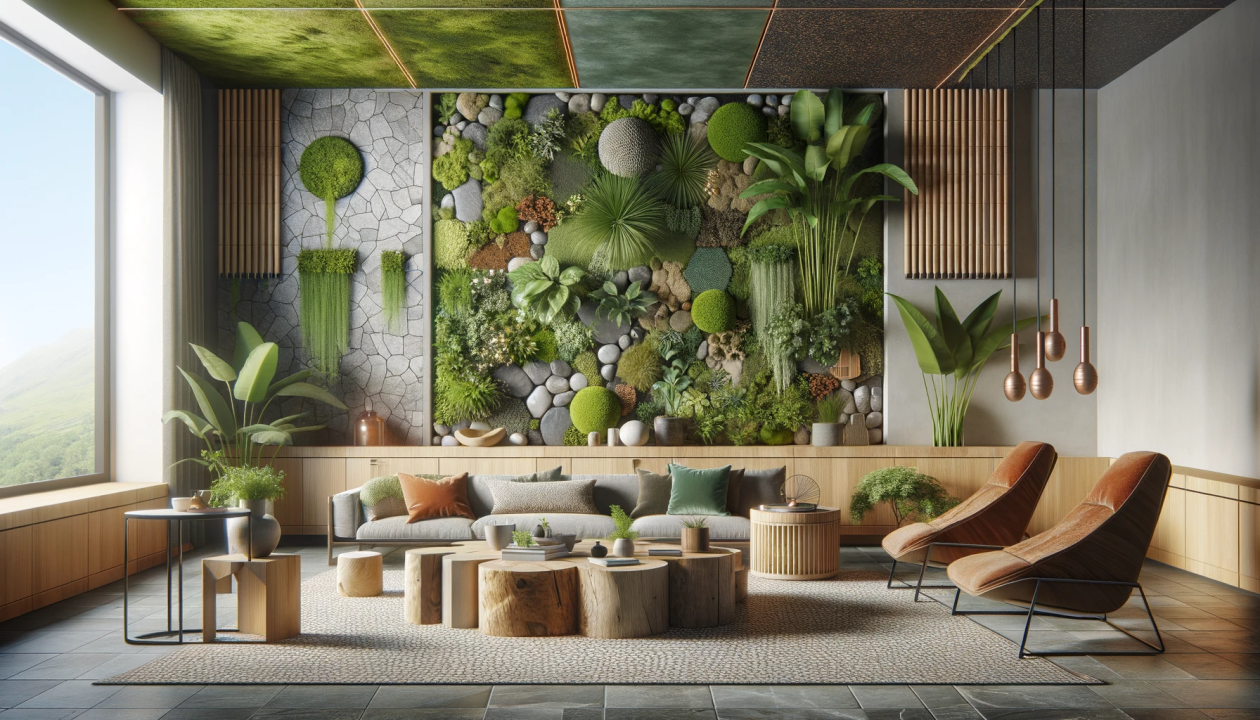
As the world becomes increasingly aware of the importance of sustainability, it’s no surprise that eco-friendly practices are making their way into the realm of interior design. In 2024, we can expect to see a surge in sustainable interior design trends that not only enhance the beauty of our living spaces but also minimise our environmental footprint. From repurposed materials to energy-efficient solutions, here are five sustainable interior design trends to embrace this year.
Upcycled Furniture:
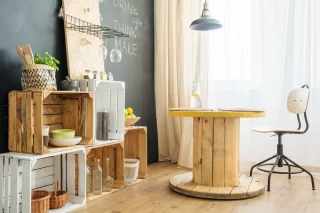
One of the most prominent sustainable interior design trends of 2024 is the use of upcycled furniture. Instead of buying new pieces, consider giving old furniture a new lease on life by refurbishing or repurposing them. From reclaimed wood tables to refurbished chairs, upcycled furniture adds character and charm to your space while reducing waste and conserving resources.
Biophilic Design:

Biophilic design, which emphasizes a connection to nature, continues to gain popularity in 2024. Integrating natural elements such as plants, natural light, and organic materials into your interior design not only enhances aesthetics but also promotes well-being and sustainability. Consider incorporating living walls, indoor gardens, and sustainable wood finishes to bring the outdoors inside and create a healthier living environment.
Energy-Efficient Lighting:

With a growing focus on energy conservation, energy-efficient lighting solutions are becoming a staple in sustainable interior design. LED lights, in particular, consume significantly less energy than traditional incandescent bulbs and last much longer, reducing both energy consumption and maintenance costs. Additionally, consider incorporating natural light sources such as skylights and large windows to maximize daylight and minimize the need for artificial lighting during the day.
Sustainable Textiles:

When it comes to upholstery and soft furnishings, opting for sustainable textiles is key to reducing environmental impact. Look for fabrics made from organic or recycled materials, such as organic cotton, hemp, bamboo, or recycled polyester. These materials not only reduce the use of harmful chemicals and pesticides but also minimize waste and support eco-friendly production practices. Additionally, consider investing in durable, high-quality textiles that stand the test of time, reducing the need for frequent replacements.
Smart Home Technology:

In 2024, smart home technology continues to evolve, offering innovative solutions for sustainable living. From smart thermostats that optimize energy usage to home automation systems that control lighting and appliances, these technologies can help reduce energy consumption and increase efficiency in your home. Additionally, smart home devices such as occupancy sensors and smart meters provide valuable insights into your energy usage, empowering you to make informed decisions about resource management and conservation.
As we strive to create more sustainable living environments, embracing these five interior design trends can help reduce our environmental impact while creating beautiful and functional spaces. Whether you’re upcycling old furniture, incorporating natural elements, or investing in energy-efficient technologies, every sustainable choice contributes to a greener future for generations to come. So let’s embrace these trends and make sustainability a cornerstone of our interior design practices in 2024 and beyond.
-

 Style11 months ago
Style11 months agoBridal Guide : Best Looks of Radhika Merchant Ambani
-

 Fashion1 year ago
Fashion1 year agoMost Discussed Ajrakh Saree of Alia Bhatt
-

 Entertainment1 year ago
Entertainment1 year agoBridal Bliss : All Bridal Looks of Swasika Vijay
-

 Movies1 year ago
Movies1 year agoA Nostalgic Journey Through Love &Cinema : Best Bollywood Romantic 90s Movies
-

 AD8 months ago
AD8 months agoPopular Curtain Fabrics to Consider for Your Home
-

 Fashion1 year ago
Fashion1 year agoMajor Denim Trends You Need To Know in 2024
-

 Events9 months ago
Events9 months agoBest of Fashion Looks : Diya Krishna Wedding
-

 Events8 months ago
Events8 months agoThe L’Oréal Paris Show at Paris Fashion Week 2024
































